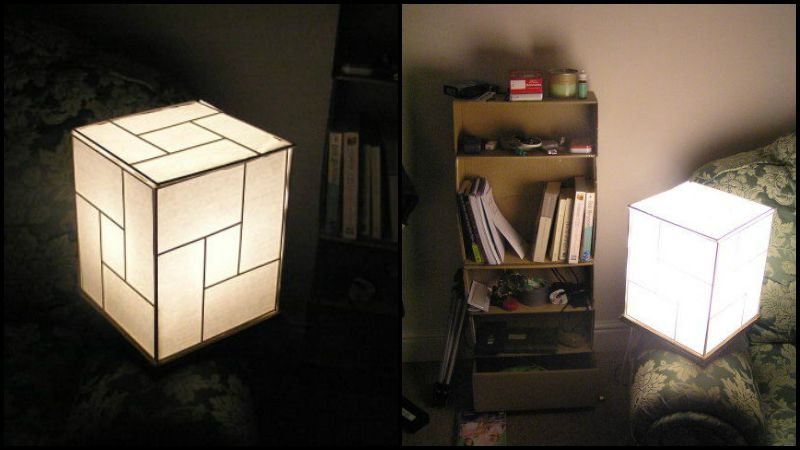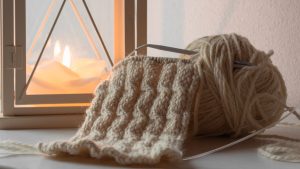Essentially, repeat the process at 90 degrees to the first stick- measure away from one edge with sticks of one length and glue a stick of the other length along the line.
Contents
3. Glue the framework to your paper
Repeat for the remaining sticks, gluing all the points they meet at. Now you should have a glued-up frame. Admire its spindly beauty.
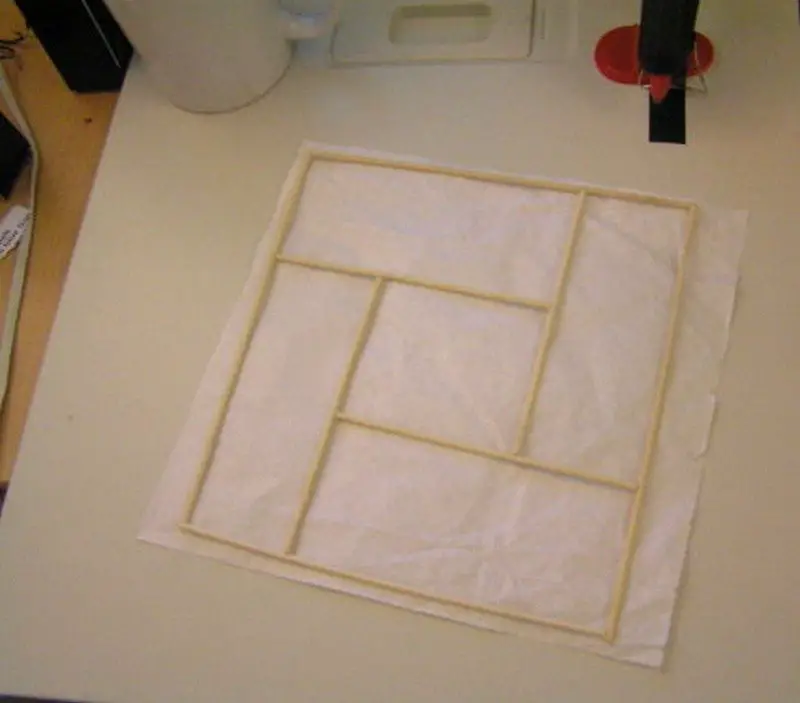
Now grab a piece of paper and lay it on top of the frame. (You can turn the frame over if you are worried about the “handedness” of your motif, ie it doesn’t have reflective symmetry). Apply dabs of hot glue along one of the short sides of the frame to stick the paper to it. Work towards the other end, taking the paper with dots of glue- seams are unnecessary and get strands of glue everywhere unless you’re very handy with a glue gun, and the paper isn’t structural so enough to keep it held to the frame is ok.

4. Trim the excess
Once the glue is set, trim the paper along the edges of the frame, as neatly as you can because this will be on the outside of the lamp.
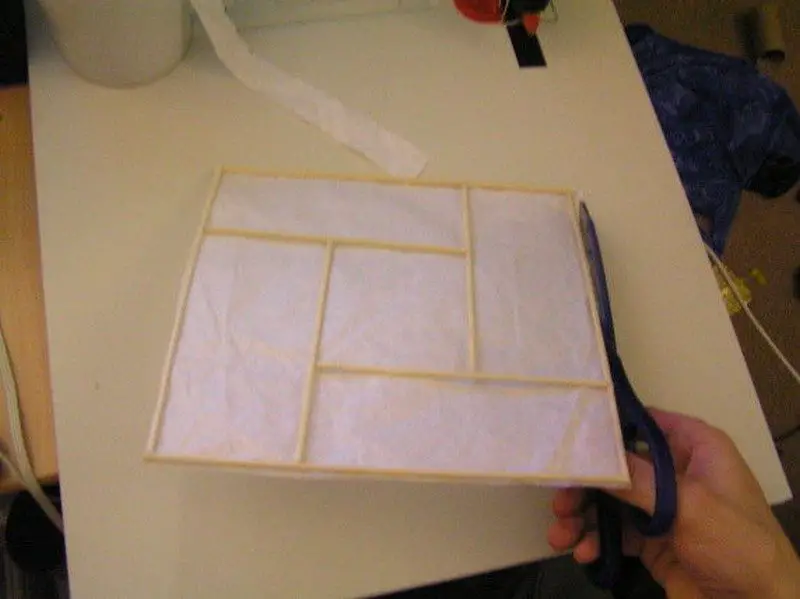
5. Repeat the steps for the remaining sides
Make some more! Yep — time to make three more side panels and a top panel if you so desire, exactly the same way as last time. I made all the frames in one go and then skinned and trimmed them, it’s a little less frustrating if you are only doing one task at a time.
6. Wire it up
First, strip the outer insulation of your flex a few cm, and strip the individual wires’ insulation about a cm (no more, the more you strip the higher the chance of a short. If there is exposed copper outside the cable connectors you should trim the stripped conductor). Wire one end of the flex into the socket- a plastic batten socket is unlikely to require an earth connection.
Strip the other end of the flex similarly and wire the plug. Check that an appropriate fuse is installed- you should only need a 1 Amp fuse for an 11W CFL, but higher wattages (especially in 110V mains areas) will probably need a 3A fuse. If you have a 13A fuse replace it with a lower value.
7. Install the switch
Install the torpedo switch close to the socket end of the flex if you desire. You can now plug it in and perform a quick test to check all your electrical parts work- if it’s going to catch fire, better to do it while it isn’t glued into a box made of paper and cardboard.
8. Make the base
Cut out some squares of corrugated cardboard the same width as the width of your side panels. Laminate them with more glue, alternating the direction (or “grain”) of the cardboard for maximum strength. I recommend at least two layers of double-layer cardboard or four layers of regular (like in the image).
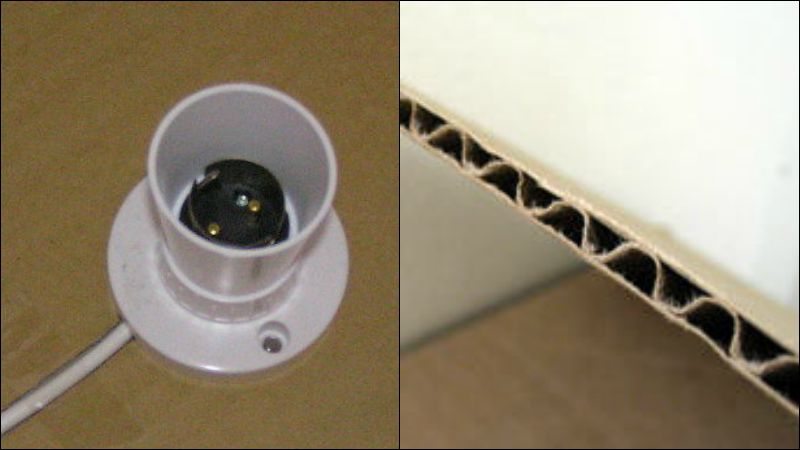
9. Attach the socket to the base
Cut a shallow groove from one edge of the base to roughly the center, to accommodate the flex. Glue the batten socket into the middle of the base with the flex in the groove.

10. Assemble your Japanese lamp
Assemble the sides of the lamp around the base and mark where the corners sit. Now run a seam of hot glue along the inside edge where the base of each side panel meets the base, and up the insides of the side edges. Don’t glue the base on it, as you will need to remove it to change the bulb.
And we’re done! We can now display our beautiful Japanese lamp! It’s a great addition to any room, and it’s sure to be a conversation starter. Thanks for following along, and we hope you enjoy your new lamp!
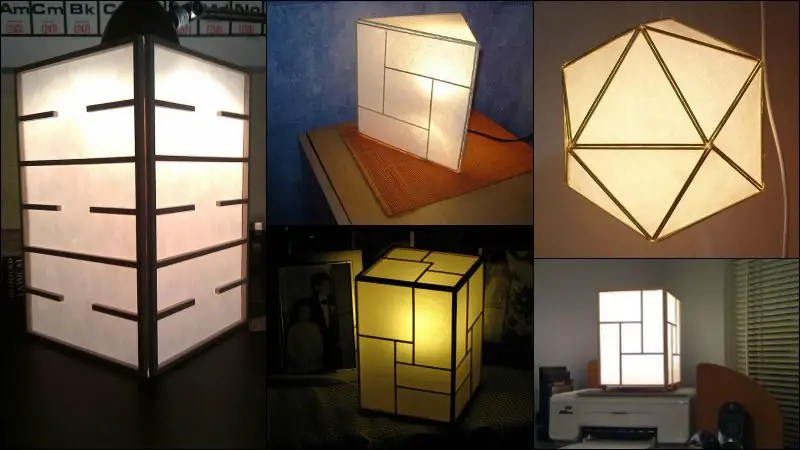
Tips on using a DIY Japanese lamp
When using a DIY Japanese lamp, it is important to keep safety in mind. Here are some tips to help you stay safe while enjoying your lamp:
- The lamp is very light and not very strong, so don’t put it somewhere it will get knocked around.
- With an 11W CFL, it gives a soft glow that is ok to read but won’t light up a whole room brightly.
- Running for an hour with the lid on, the paper on the lid was slightly warm to the touch and the sides were room temperature so it’s probably safe to leave on for long periods, but if you are using an incandescent bulb I would suggest not using the lid.
- The lamp is not at all fire safe- don’t even think about using a naked flame or another combustion-based source of light in this rather than the lightbulb. Again I accept no responsibility for what you do outside the scope of these instructions.
Thanks to PKM for this great tutorial.
If you liked this project, you might also like to view Constellation Jar Lamp…

